As circumscribed scleroderma or Morphaea is an inflammation-related skin disease that is probably due to a malfunctioning immune system and which usually affects more women than men. Since the cause of the disease has not yet been clarified, localized scleroderma can only be treated symptomatically.
What is morphaea?
The Circumscribed Scleroderma (Morphaea) is an inflammatory disease that is associated with hardening (sclerotherapy) of the affected skin areas. In general, there is a distinction between the limited variant, which mainly affects the upper body, the disseminated variant, which manifests itself mainly on the upper body and in the lumbar and / or thigh area, and the linear with band-shaped skin changes on the extremities and the deep form with involvement of the subcutis (subcutaneous tissue ) and the fascia (Morphea profunda) differentiated.
Initially, Morphaea manifests itself through inflammation, which often causes a reddish-purple discoloration of the skin. In the further course of the process, the cells of the connective tissue increasingly form collagen fibers, as a result of which the affected areas thicken and harden, while the number of smaller blood vessels decreases.
As a rule, atrophy (tissue shrinkage) as well as a porcelain-like appearance of the skin with whitish discoloration and a loss of the characteristic surface relief of the epidermis subsequently occur. In many cases, the atrophy also causes a reduced number of hair follicles as well as sebum and sweat glands. The skin areas affected by the circumscribed scleroderma become dry, and can become tight and / or itchy.
causes
The cause and etiology of Morphaea could not be conclusively clarified so far. It is assumed that the disease is caused by a dysregulation of the immune system (autoimmune disease).
As a result of this dysregulation, the human immune system is directed against the body's own structures, which presumably damage the small blood vessels of the dermis. The cells of the affected skin areas synthesize inflammatory messengers and growth factors that stimulate the cells of the connective tissue to increase the production of collagen fibers.
As a result, the normal balance between the build-up and breakdown of these fibers is impaired, since the increased formation of collagen fibers is offset by a reduced breakdown.The connective tissue fibers accumulate in the skin areas affected by the circumscribed scleroderma and cause hardening (sclerosis) and a loss of flexibility.
Symptoms, ailments & signs
The complaints and symptoms of circumscribed scleroderma depend on whether it is the limited, disseminated, linear or deep form of the disease. The symptoms of all circumscribed scleroderma are defined by circumscribed, clearly delimited hardening of the skin in different places. At the beginning, signs of inflammation and swelling may be noticed on the affected skin areas.
The spot can be reddish. The early signs do not suggest that it is some form of scleroderma. The next symptoms follow after several weeks. The skin in the same place becomes increasingly hard. This can also be accompanied by a noticeable thickening of the skin layers.
It is questionable whether the person concerned notices the shrinking of the smaller blood vessels. He is much more likely to notice a porcelain-like appearance that the affected skin areas now take on. The epidermis atrophies. It no longer has its usual surface structure. It looks whitish, thin and smooth.
In addition to these symptoms of circumscribed scleroderma, hair loss or itching can occur on the affected skin areas. These are signs that the hair follicles, the sebum glands or the sweat glands are also affected by the circumscribed scleroderma. The skin looks dry. If there are still inflammatory processes in the skin, a reddish-purple ring can form around the affected skin area.
Diagnosis & course
As a rule, a circumscribed scleroderma diagnosed based on clinical symptoms. The diagnosis is confirmed by means of a biopsy of the affected skin areas with a subsequent histological examination. This also serves to differentiate it from systemic scleroderma, in which the connective tissue of the internal organs and, in many cases, the face and hands are also affected.
Raynaud's syndrome is also indicative of systemic scleroderma and is considered an exclusion criterion for morphea. The thickness of the affected skin areas can also be determined as part of a sonography (ultrasound). Circumscribed scleroderma can stagnate within 3 to 5 years so that no new foci develop. However, the areas affected by the morphea usually only show a slight tendency to improve.
Complications
With this disease, those affected usually suffer from various skin conditions. In any case, they have a negative effect on the aesthetics of those affected, so that most patients feel uncomfortable with the symptoms and suffer from inferiority complexes or a reduced self-esteem. Psychological complaints are also not uncommon with this disease.
The skin itself is reddened and hardened. There is also swelling on the skin and, in many cases, severe hair loss. Those affected can also suffer from itching, which is only aggravated by scratching. In most cases, self-healing does not occur, so medical treatment of the disease is necessary in any case.
The symptoms can be alleviated with the help of various therapies. There are no complications. Creams or ointments can also be helpful and have a positive effect on the course of the disease. As a rule, life expectancy is also not negatively affected. In the case of psychological complaints, patients with this disease are dependent on psychological treatment.
When should you go to the doctor?
If someone notices a hardening, thickening, or discoloration of certain areas of the skin, they should see a doctor as soon as possible. This phenomenon could be a circumscribed scleroderma. In contrast to the systemic form of scleroderma, this form is restricted to certain areas of the skin. In this respect, it is easier to treat.
The doctor can diagnose the circumscribed scleroderma or morphea by visual diagnosis. However, it is important to do everything possible to rule out the systemic form of scleroderma. This can also harden organs. It ultimately leads to death, which does not apply to the circumscribed scleroderma. This rarely affects the hands and face, but rather other body areas. The accompanying occurrence of Raynaud's syndrome also suggests the systemic variant rather than circumscribed scleroderma.
So if there are hardened areas of skin on the hands or face and the hands also hurt and appear to have poor blood circulation, a visit to a dermatologist should be all the faster. If necessary, the doctor will determine the type of scleroderma with an ultrasound scan and tissue samples.
It has not yet been clarified whether or not circumscribed scleroderma is an autoimmune disease. What is clear, however, is that the cause of the hardening of the skin is inflammation. This local skin disease can be treated well.
Treatment & Therapy
Due to the unexplained etiology of the circumscribed scleroderma So far there is no causal therapy and the therapeutic measures, which depend on the form and extent of the disease, aim to reduce the specific symptoms.
Medicinal and phototherapy measures have proven effective to alleviate symptoms. For example, anti-inflammatory active ingredients such as glucocorticoids in the form of creams or ointments are used to treat the inflammatory processes. In addition, moisturizing ointments, lotions or creams are recommended for the basic care of the sclerosed skin areas and to prevent itching and a possible feeling of tension.
Existing or acute inflammatory reactions can be restricted by light therapy with UVA light as part of phototherapy. At the same time, UVA light stimulates the synthesis of enzymes that break down the increased collagen. In some cases, a cream containing psoralen is applied beforehand to strengthen the effect (PUVA therapy). While the reddish, inflammatory skin discoloration usually regresses and the whitish areas become softer, atrophy and the loss of hair follicles cannot be reversed by the therapy.
In the context of clinical studies, shock wave therapeutic measures are also tested (including at the Bern Inselspital), through which the sclerosed tissue is destroyed in order to stimulate the blood flow and the synthesis of new blood vessel and skin cells. If skin areas in the joint area are affected by morphea, physiotherapeutic measures may be indicated to prevent joint stiffening (contracture).
You can find your medication here
➔ Medicines against redness and eczemaprevention
Since the etiology of the circumscribed scleroderma has not yet been clarified, there are no preventive measures. The effects of circumscribed scleroderma can presumably be minimized by avoiding factors that negatively affect the immune system (including stress, alcohol and nicotine consumption).
Aftercare
Follow-up care for circumscribed scleroderma is based on the individual symptoms and the course of the disease. Comprehensive aftercare is not necessary for minor complaints. The condition can be treated with medication and alternative treatments such as light therapy. As part of the aftercare, the skin areas are checked again.
If the outcome is positive, the patient can then be discharged. A patient consultation is also part of the aftercare. When taking the medical history, the symptoms and treatment methods are discussed. In addition, the doctor responds to individual queries from the patient, for example with regard to reimbursement of costs or accompanying therapeutic treatment.
Adolescents in particular, who sometimes suffer severely from skin changes, often need therapeutic support. If the circumscribed scleroderma does not subside through conventional measures, alternative therapy methods must be tested. In this case, follow-up care is postponed until the condition has cured.
In the rare cases of chronic illness, the responsible doctor must be visited at regular intervals so that he can carry out the necessary routine checks. Follow-up care is provided by the dermatologist or general practitioner. Children and adolescents are often treated by the pediatrician, who takes over the regular follow-up examinations after the end of the treatment.
You can do that yourself
This diagnosis is very stressful for most patients, especially if the affected skin areas on the face and / or hands are visible to everyone. If the burden becomes excessive, accompanying psychotherapeutic treatment is to be recommended. Visiting a self-help group can also help those affected. Patients can find information on the illness and on meetings nearby, for example at the self-help portal www.sklerodermie-sh.de.
Exercise, as far as the illness allows, also improves your mood. Especially if the patient is prone to depression, it is advisable to take part in a team sport and socialize afterwards. It is not yet certain how circumscribed scleroderma can develop. However, regardless of whether it is an incorrect reaction by the immune system or an inflammation in the body, a decidedly healthy lifestyle should enable the body to better cope with the disease.
In addition to the already mentioned sport, a healthy lifestyle includes a selected, light diet with lots of vitamins and fiber, but with little sugar and animal fat. A regular daily routine with sufficient sleep and rest times as well as abstaining from alcohol and nicotine are also recommended. Sports such as yoga, Pilates or even meditation can counteract stress that could otherwise worsen the disease.

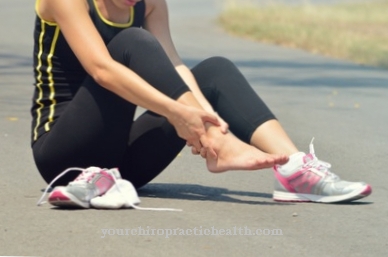
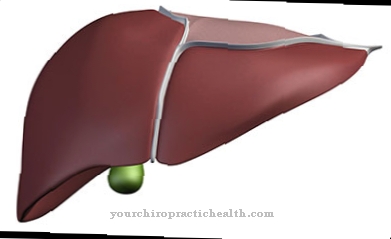
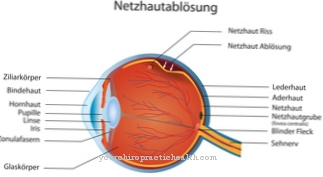
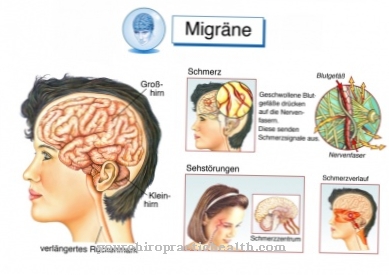
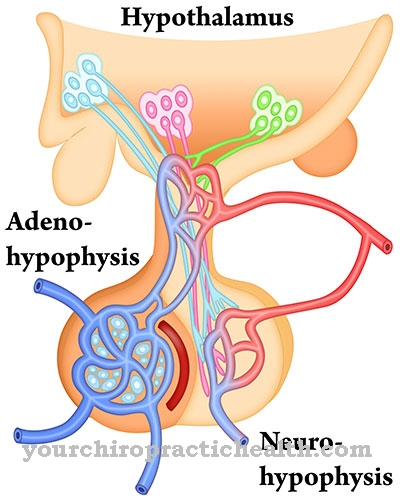







.jpg)

.jpg)
.jpg)











.jpg)